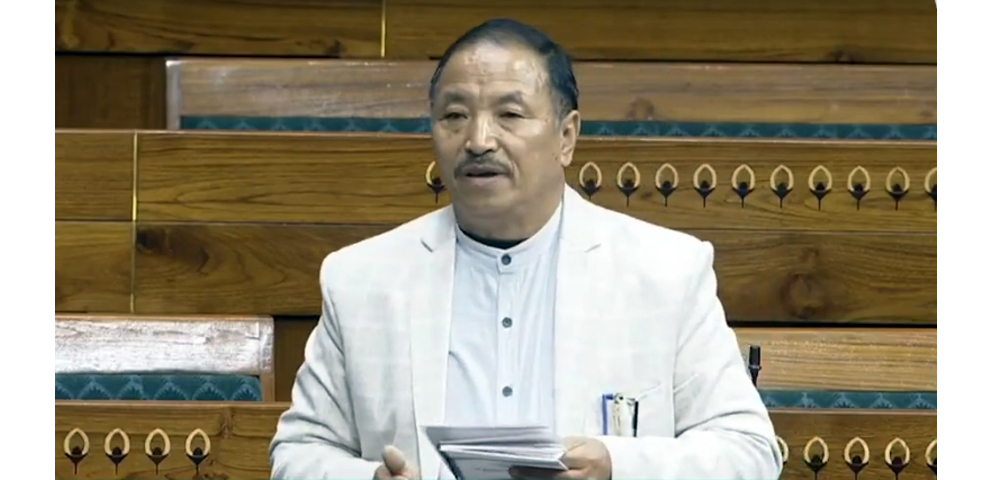The Nagaland Gorkha Association (NGA), the apex body representing the Gorkhas in Nagaland, has formally submitted a representation to the Government of Nagaland, urging the enumeration of Gorkhas settled in the state under the Register of Indigenous Inhabitants of Nagaland (RIIN). The delegation, led by President Nobin Pradhan, met with Chief Secretary J Alam at the State Civil Secretariat on October 14, 2024.
In a letter addressed to the Chief Secretary, the NGA highlighted the historical presence of Gorkhas in Nagaland, noting that they have lived harmoniously alongside the Naga community since the 1870s. “The earliest Gorkha settlers were brought by the Britishers and settled in Kohima, Dimapur, Mokokchung, Wokha, and Naginimora under Mon district,” the NGA explained.
The association emphasized the significant contributions of the Gorkha community during critical periods in history, such as World War II. “At the height of the Second World War… Gorkhas chose to stay back and fought ferociously,” they recalled. Additionally, they thanked the Government of Nagaland for recognizing the contributions of Gorkha individuals who have held esteemed positions within the state.
The NGA pointed out that the Gazette Notification No. GAB 08//2/9/73, issued on October 22, 1974, declared Gorkhas as “Non-Naga Indigenous Inhabitants of Nagaland,” granting them various rights. However, the NGA lamented that this recognition is limited to certain districts, stating, “The above-mentioned Gazette notification granting the rights is confined to Kohima, Wokha, and Mokokchung only.
“Dimapur, Chumoukedima, Niuland, and other districts of Nagaland where Gorkhas are residing do not have a single Gorkha family in the Gazette Notification list. It is quite disappointing that Dimapur was then a subdivision of Kohima where sizeable Gorkhas are residing in and around Dimapur, particularly in Medziphema, Padampukhuri, Chumoukedima, Nepali Gaon, Singrijan village, Khopanala village, Lengrijan, Kashiram village, Purana Bazar. It is worth mentioning that Singrijan village and Khopanala village (established in 1939) and Nepali Gaon (established in 1930) are exclusive Gorkha villages but are excluded from the above-mentioned Gazette Notification. We feel this is a grave injustice to our people,” stated the association.
In response to demands from Civil Society Organizations (CSOs) in Nagaland for the introduction of the Inner Line Permit (ILP) in Dimapur, the Government formed a three-member Commission led by former Chief Secretary Banuo Z Jamir (IAS, Retd). On September 24, 2019, the NGA delegation presented a memorandum to the Commission, requesting the maintenance of the status quo regarding the Gazette Notification and the recognition of Gorkhas settled in Nagaland prior to December 1, 1963, as Non-Naga Gorkha Indigenous Inhabitants.
The Commission’s report was tabled in the Nagaland Legislative Assembly on August 10, 2020, which recommended using documentation provided by Gorkhas as proof of identity and residency for authentication. During a Cabinet meeting on September 11, 2024, key decisions regarding ILP and RIIN were approved, including the initiation of the enumeration of the Kachari, Kuki, Garo, and Mikir (Karbi) communities settled in the state before December 1, 1963, to determine their eligibility for Indigenous Inhabitant Certificates (IICs) and Permanent Resident Certificates (PRCs).
However, the NGA expressed dismay at a subsequent order from the Home Department’s Political Branch, issued on September 20, 2024, stating that the enumeration of Nepali/Gorkhas permanently settled in Nagaland prior to December 31, 1940, would occur simultaneously with other communities, with December 1, 1963, as the qualifying date.
Given these developments, the NGA has requested the State Government to extend the issuance of Non-Naga Gorkha Indigenous Inhabitant Certificates to December 1, 1963. The NGA highlighted the lack of representation for Gorkhas in the 1974 Gazette Notification due to the absence of enumeration in various districts, especially Dimapur subdivision, which includes Chumoukedima and Niuland.
(Full document here)



